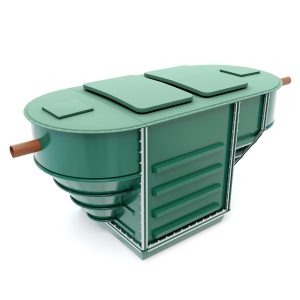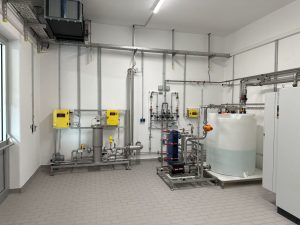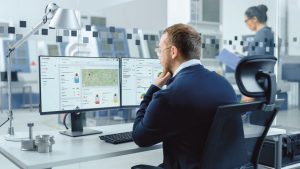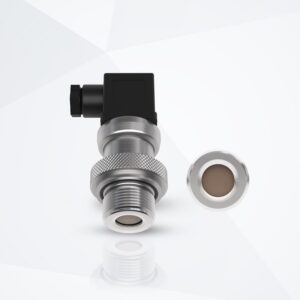ProMinent’s DULCOLEVEL Sensor Enables Easy Level Measurement
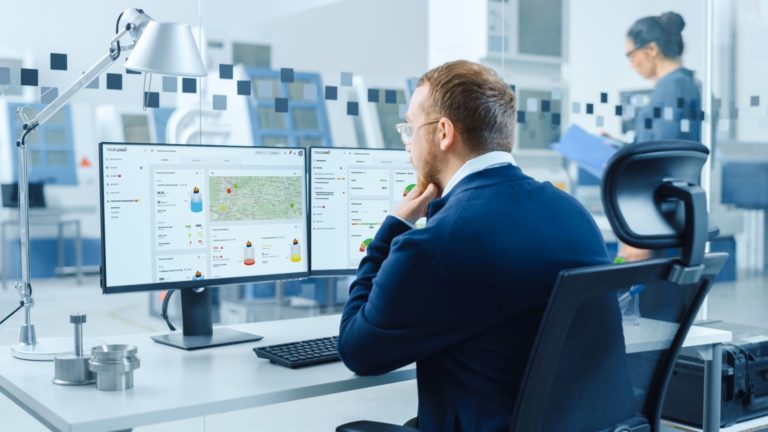
Access from anywhere via web application; all data in real time (Image source: ©Gorodenkoff-stock.adobe.com/ ProMinent GmbH)
A number of specific examples from the waste water treatment, chemical, food and beverage industries show how advanced this technology is compared to the traditional ultrasonic methods.
When it comes to the use of critical chemicals such as high-percentage hydrogen peroxide (H2O2), users are obligated to ensure complete and precise reporting of consumption. National monitoring authorities impose strict verification requirements on users.
IIoT-capable technology
This is where the IIoT-capable radar liquid level sensor DULCOLEVEL from ProMinent, based in Heidelberg, Germany, scores particularly well. In conjunction with a pump and digital connectivity, the sensor is the final missing link in achieving integrated digital fluid management. A new inventory management module, as part of the long-standing DULCONNEX cloud platform, is a further component of this system. It is a world first in seamlessly combining the tasks of "pumping and dosing" with liquid level detection. While the web application provides comprehensive diagnostic data in real time, the inventory management system shows all connected locations and systems in a graphical overview. Critical statuses are colour-coded on the dashboard to immediately catch the eye. Simply by clicking the mouse, users can then access complete records on all installed devices and tanks, including their liquid levels as well as feed rates and consumption. This enables not only operators, but also service staff or external service providers to play their part in ensuring smooth operation. If verification of consumption is requested, it can be accessed in real time whenever necessary.
"We have now equipped a multitude of different customers who are subject to this special verification requirement with a radar sensor and cloud connection," explains Daniel Marcolini, Product Manager at ProMinent. There are three different connection options depending on the local conditions.
Retrofitting in next to no time
By far the most common way of integrating the radar liquid level sensor into a system controller is via the standard 0/4 - 20 mA connection. This involves a connected programmable logic controller (PLC) taking over both the signal output and the power supply. The liquid levels recorded by the sensors are then sent to the central control room via the PLC as percentages or litres.
The second option for connecting to the digital process control system is far less common, but highly ingenious: it makes use of the existing communication infrastructure by linking the ProMinent pump and liquid level sensor using the DULCONNEX Blue app. The app is freely available in the Google and Apple stores. The app and sensor automatically recognise each other and are paired via Bluetooth once a PIN is entered. During operation, the sensor transmits the liquid levels to the pump. From there, the data is sent to the central control room together with the pump information via Profibus, Profinet or Modbus. "Because pumps and metering systems are often already wired accordingly in a plant environment, the liquid level sensor can be integrated without any additional electrical work," says Daniel Marcolini on the benefits of pairing with Bluetooth. The only prerequisite on site is that the pump and sensor have to be installed within the Bluetooth reception range of some metres. The app connection is also ideal for tanks installed at height, as it allows liquid levels to be read and the sensor operated conveniently from the ground using a mobile phone.
For systems that have no process control technology at all, the liquid level sensor and pump can be integrated using an IIoT gateway. This forwards the data from both modules to the DULCONNEX cloud platform. The pump and sensor are again paired via Bluetooth.
Hands-off operation thanks to digital fluid management
Fully digital fluid management also enables operators who lack expertise in this technology to manage their systems remotely and cost-effectively. This is often the case with hotel pools or farming applications, for example. In both cases, the aim is to provide high water quality: hygienic, germ-free conditions for swimmers and good drinking water for livestock. Third-party providers simply access the managed systems remotely to stay informed about the system status at all times. Chemical changes are usually initiated in good time, but system problems or faults can also be diagnosed at an early stage.
Contact-free measuring
When it comes to aggressive chemicals – as in the chemical industry, for example – another advantage of radar technology comes into play. Radar sensors can measure liquid levels without contact and at the same time work more precisely, reliably and safely than sensors based on ultrasonic technology. Contact-free measurement means that the sensors can be installed outside plastic tanks and detect the liquid level through the tank wall. This offers a number of advantages:
- Every opening on a tank increases the risk for people in the vicinity.
- The sensor does not come into contact with aggressive media.
- It is much easier to replace the tank if necessary.
Automated solution for sewage treatment plants
The last field of application to be presented here is an automated solution for waste water treatment, which is often used in sewage treatment plants. However, it is essentially suitable for any application in which flocculation aids help to bind and dewater solids in waste water, making them easier to remove. The solution centres around an Ultromat polymer system from ProMinent, in which the liquid and solid polymers mature in two chambers to form a ready-to-use polymer solution, which is then held ready for metering out in a third chamber. A DULCOLEVEL radar sensor detects the liquid level in this third chamber. When the level drops, new polymer is added, enabling the multi-chamber principle to provide continuous process control. The liquid level is measured extremely precisely via the sealed plastic cover, so that the quality of the air-sensitive polymer solution remains high.
Check for connectivity before purchasing
Due to the many advantages of radar technology, it is clear to Markus Sharpe, Director of Digitalisation at ProMinent, that this solution will sooner or later replace conventional ultrasonic technology in liquid level measurement. The benefits are too great given the comparable cost. He would therefore urge customers looking to upgrade their systems now to pay close attention to the connectivity of their devices and sensors, as well as the option of connecting to the cloud.
Source: ProMinent GmbH

